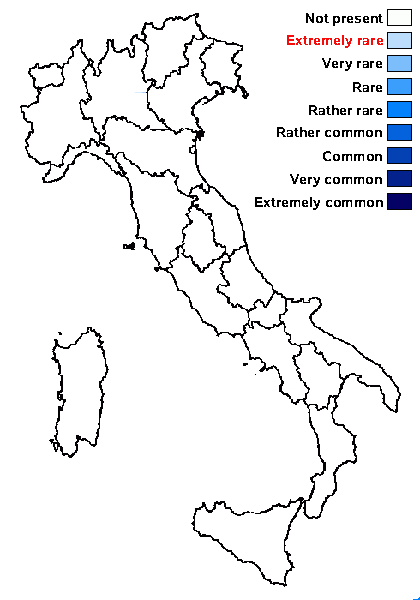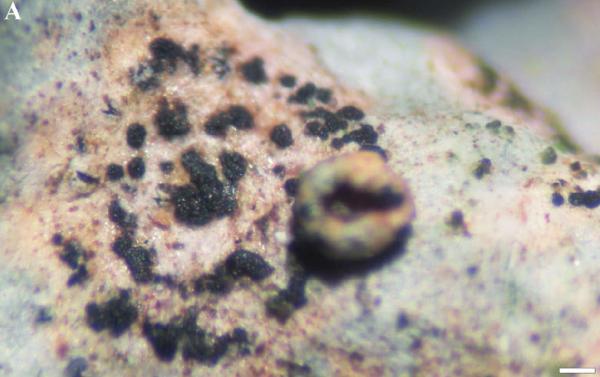Arthonia pepei Etayo & Pérez-Ortega
Herzogia, 29, 2/1: 317, 2016.
Synonyms:
Distribution:
Description: Thallus inapparent, not lichenized, the hyphae developing inside the thalli of Parmelina-species, producing pinkish to cream-coloured, orbicular, 0.5-1.2 mm wide patches. Apothecia arthonioid, black, rounded, flat to slightly convex, 0.7-1.4 mm across, soon sessile, forming concentric circles of up to 15 apothecia, or crowded into convex, up to 3.7 mm wide pillows with uneven borders. Proper exciple absent or much reduced, up to 20 μm wide, bluish-brown, K+ olive, N+ orange-brown; epithecium dark brown to brown-black, K+ olive, N+ orange-brown; hymenium bluish grey, 30 μm high, I+ red, K/I+ blue; paraphysoids simple to branched, pigmented in upper part, 2-3-5 μm thick; hypothecium mostly colourless, with some brown-pigmented cells, 10-15 μm high. Asci 8-spored, clavate to ovoid, semi-fissitunicate, with a large, non-amyloid apical dome, an ocular chamber, and a distinct K/I+ blue ring in tholus, Arthonia-type. Ascospores 1-septate, with one cell slightly larger, hyaline, (8-)9.5-11 x 4-4.5 µm. Photobiont absent. Spot tests: K-, C-, KC-, P-. Chemistry: without lichen substances.Note: a lichenicolous fungus growing on the thalli of Parmelina-species; described from Spain, to be looked for in Italy.
Growth form: Lichenicolous fungus
Substrata: bark
Reproductive strategy: mainly sexual
paras Parmelina-species

Predictive model
Growth form: Lichenicolous fungus
Substrata: bark
Reproductive strategy: mainly sexual
paras Parmelina-species

Predictive model
 INDEX FUNGORUM
INDEX FUNGORUM
 GBIF
GBIF


